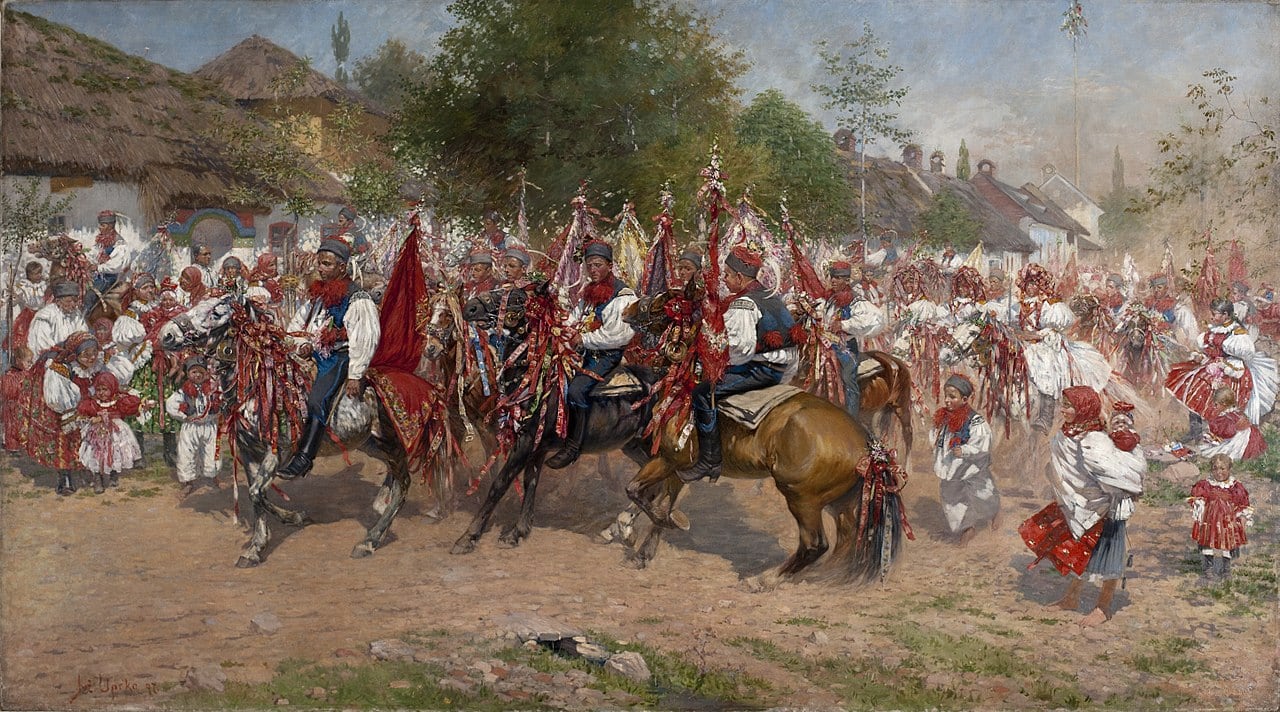Zajímavé díky
31.5. 1819 Battle of the Four Kings of Haná
Categories: Years of war and revolution , Calendar

There is no mention of it in any history textbook, although the battle of the four Haná kings resulted in thirteen dead and dozens of wounded. It took place at the end of May 1819.
This battle is linked to the Holy Days of the Kings. It is a Slovak and Haná folk custom, which is inscribed by UNESCO on the list of Masterpieces of the Oral and Intangible Heritage of Humanity. "The origin of this tradition is unknown. According to ethnographers, the ride evolved from Easter processions or royal processions. The most popular Ride of the Kings has been held in this country since 1808 on the last Sunday in May in Vlčnov near Uherský Brod," writes Jozef Petro in his book Czech UNESCO Jewels.
On Whit Monday 1819, the King's chase was also held as usual. Farmers were again sitting on the doorsteps of their land, and elsewhere they were watching the horse show with envy. The ladies again admired the beauty of the village sons, and then gave out handouts according to their satisfaction.
But in four villages something had already happened during the procession. "But it escaped the attention of all the onlookers. And when, at about five o'clock, a long line of horsemen was drawn up from Horní Moštěnice on the road to Lověšice, it was regarded as the usual chase of a foreign king. It was, however, a pre-arranged alliance against two other neighbouring villages. And so, from Bochora and Šířava, festive processions marched to the pastures of Lověšíce, where their opponents were already standing."Pavel Sobek, in the Vlkoš newsletter, describes what is written in the local chronicle.
For a long time there was a great rivalry between the villages mentioned. Eighty warriors suddenly found themselves facing each other on the field. On the one side were the Moštěn and Lověšice, on the other the Bochora and Šitzau. Both sides demanded the kings' surrender. As they were unwilling to come to any agreement, an unprecedented melee ensued. The rivals drew swords, clubs, knives and helped each other with their fists. It is said that they even fired old ceremonial rifles.
"A shot rang out, a second, a third, and then the massed chicas took off and crashed into each other in wild flight like birds of prey. Knives whistled through the air, shots rang out, heavy clubs fell on the heads of the enemies. The two enemy corps formed at once a mass of living bodies that grew ever narrower. The tumult of the battle reverberated through the silence of the early evening, and if it penetrated into some of the cottages, it was unable to give a picture of the tragedy now in progress. The battle did not last long, after a few minutes horses without riders were running through the pastures," Sobek recalls the events of that time.
The so-called battle of the four kings left eight dead on the spot and five more seriously wounded died later. Another forty warriors suffered minor injuries. This clash subsequently led to the banning of certain customs associated with the kings' cavalry. For example, sabres were not allowed to be drawn. The battle had no winners or losers. All that was left was grief and pain in the country cemeteries.
Jozef Petro: Czech UNESCO jewels.
The article is included in categories:










